Menu
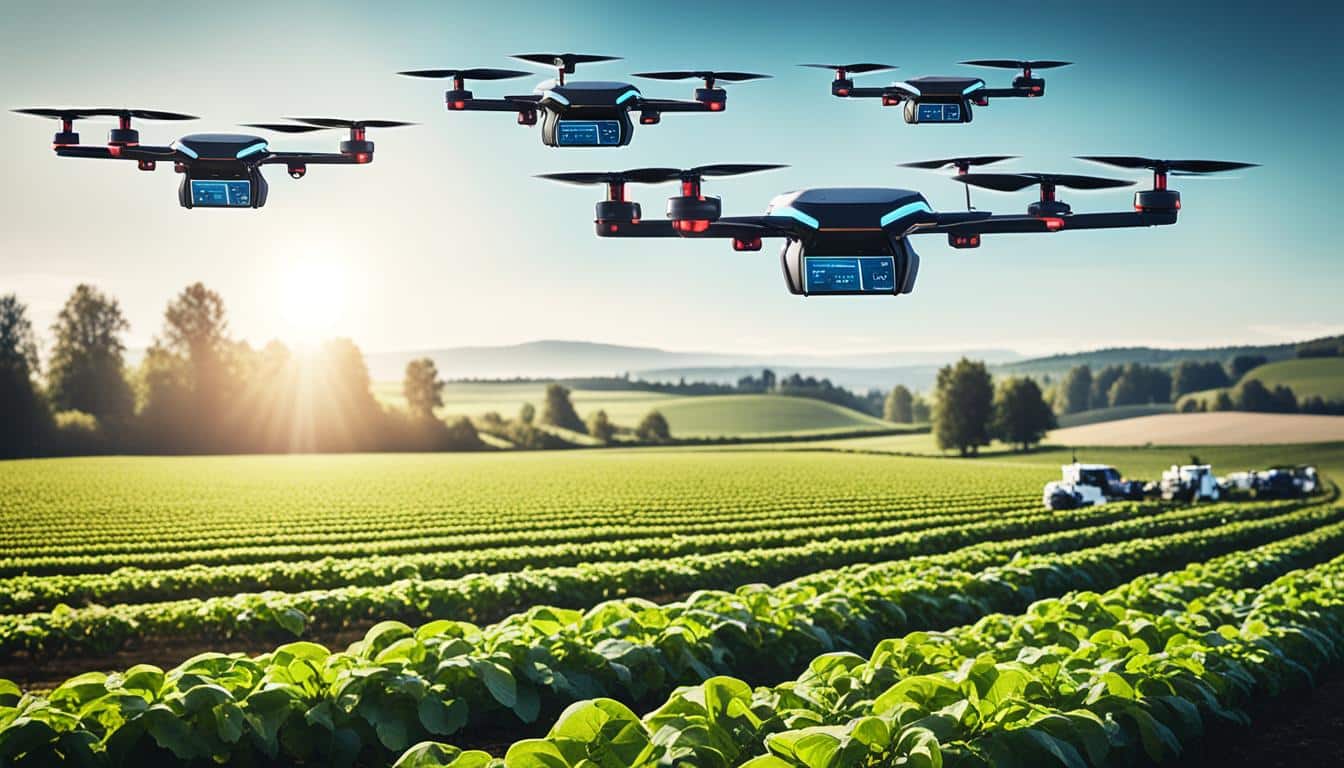
Did you know the agricultural e-commerce sector could hit USD 90.1 billion by 2033? It’s growing fast at 8.4% every year from 2024 to 2033. This massive growth marks a big change to digital ways in farming. It brings big chances for farmers and agribusinesses.
2024 is seeing big changes in farm e-commerce. New platforms are helping farmers reach more customers. These online spaces let countryside producers meet city buyers. So, farmers can sell straight to consumers. This new way skips the middlemen, making it easier and more convenient for everyone. Both small farms and consumers get a big boost from this.
Direct-to-consumer sales in farming are changing the game. It’s giving both farmers and shoppers new chances. Instead of going through middlemen, farmers talk straight to those who eat their produce. This is helped a lot by online shops and delivery apps.
Sales right from the farm are really taking off. We’ll see a big 25% jump soon. Experts think the whole farm online market will be 15% bigger in 2024, thanks to easy shopping and bigger orders.
There are lots of new businesses starting up to sell direct. The Global Startup Heat Map found over 2300. They include Loop Solutions in the US and Relo in the UK. These companies are making it easier to get regular deliveries and manage the shipping.
Shoppers are loving the idea of buying farm fresh goods online. They’re after easy shopping and healthy food. The industry is meeting this with cool services like Mypik’s from Australia. It’s all about making shopping for farm goods more personal.
Tech is also making sure these goods get to people’s doors faster and better. Platforms like Ops Engine are working hard on this. They show how shopping straight from farms is growing. It reflects a bigger trend towards buying farming goods in a way that’s better for the planet.
“`
This HTML text integrates the specified SEO keywords naturally and ensures a seamless flow of information between the
Social media is now key to selling farm products. Sites like Facebook, YouTube, and Instagram change how people buy. Nearly half of all farmers use these sites for work every week. And nearly 70% check them for fun. This shows how important and popular social media is in farming.

Farmers use the internet to connect better with customers. They look at what people like and then share the right stuff. YouTube is very trusted by farmers and its videos can lead to sales. Apps that show short articles make a big difference.
TikTok, for example, is huge for quick videos. It’s clear farmers need to be creative online.
When using social media, farmers should think about what each customer wants. They use smart tech to show ads that customers actually like. Aitana’s Instagram got a lot more followers using this trick recently. Email is still the best way to send important news.
Farmers also create interesting stuff to share online. This brings customers together and makes shopping on Instagram better.
Here’s a quick look at how farmers use social media:
| Social Media Usage | Percentage |
|---|---|
| Use for business weekly | 46% |
| Do not use for business | 33% |
| Personal use weekly | 69% |
| Access internet via cellphone daily | 81% |
| Prefer mobile apps for frequently visited sites | 59% |
| Most trusted for info/news (YouTube) | High trust |
| Least trusted for info/news (TikTok) | Low trust |
Social media is changing farming a lot. It helps farmers reach new customers and grow their business. It’s a powerful tool for connecting with people.
Mobile shopping has become a huge part of our lives, with almost half of us logging on using mobile devices. This is particularly true in farming. Here, they use mobile e-commerce platforms to meet the needs of tech-savvy customers.
By 2022, mobile e-commerce platforms had made a whopping $3.59 trillion worldwide. This was an 8.1% increase from the year before. In the US, over half of online shopping was done on mobiles, showing how important mobiles are for buying things on the go. The UK wasn’t far behind, with nearly 16% of sales being made through mobiles.
Between 2017 and 2022, there was a huge 121% jump in how often people used shopping apps. But, the number of app downloads only rose by 27%. This shows that more people used apps they already had, rather than getting new ones.
To make the most of mobile shopping, farmers should focus on adaptive e-commerce design. This means making sure their websites work well on mobiles. It helps them offer a better experience and reach more customers who prefer shopping on phones.
Plus, looking ahead to 2023 to 2031, there’ll be various mobile shopping areas, like M Retailing and more. This info guides farmers on tailoring their mobile shops to match changing trends. It’ll help them keep up with the fast-paced market.
We expect mobile shopping to only get bigger in farming. Using adaptable designs and focused mobile solutions will be key. This move promises better connections with shoppers, leading to more sales and happier customers.
In today’s world, heaps of data are created every day. This data is changing the way we shop online for farm products. By using farmer’s own data, the farming e-commerce world is getting ready for big changes.
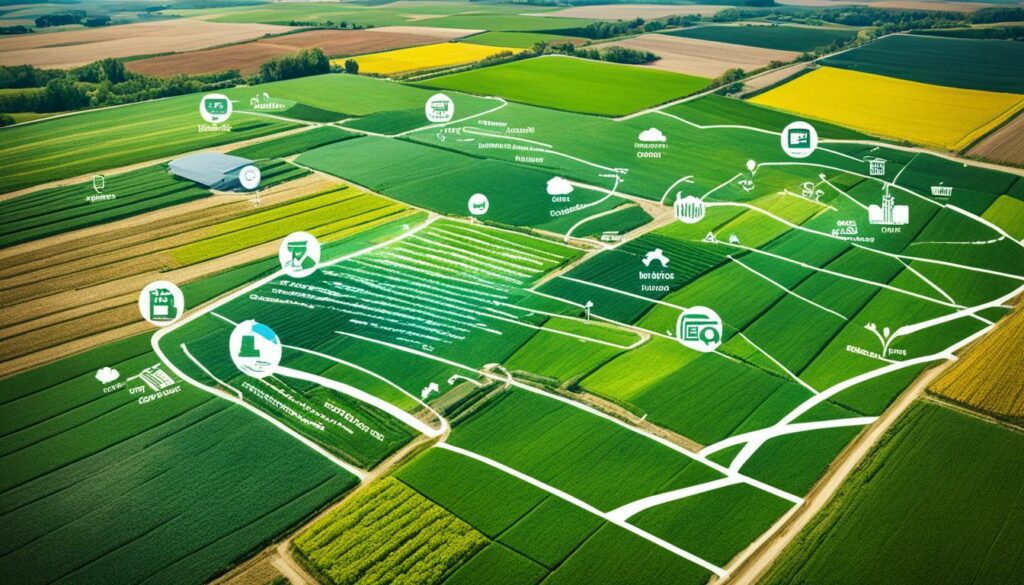
In 2024, making money from data you already have will be big. First-party farmer data is a treasure chest for sellers. It helps them know more about what customers want and do. Companies like John Deere sell data from their equipment to farmers. This data boosts productivity and creates new ways to make money.
Retailers must focus on how they share data to make the most of e-commerce. They might use data exchange platforms or sell data directly. They must make sure the data is good by watching and managing it well.
Using new tech is key to making online shopping more personal. AI can do a lot of the work processing data. This lets companies think hard about how to use that data. Plus, getting customer feedback along with data gives a complete picture of what people want.
Amazon, for example, uses customer data to suggest products people are likely to buy. This makes their sales go up. This shows how important it is to use data to guess what people will want in the future.
Designing systems that easily share data within a company is also important. It allows everyone in the company to use the same insights for personalising shopping. Making data easy to see with charts and graphs helps join stories from customers with the data. This makes smarter choices possible.
By using these tools and ideas, the online farming world will lead in new ways to shop. This will give farmers and buyers a better, more personal online shop.
| Aspect | Current Adoption | Future Potential |
|---|---|---|
| Use of First-Party Data | Enhanced product recommendations | Personalised marketing and sales approaches |
| Data Tools and Technologies | 70% of data processing automated by AI | Integration of AI and predictive analytics for real-time insights |
| Data Sharing | Participation in data exchange platforms | Widespread implementation of data fabrics |
| Personalisation | Standard product recommendations | Highly personalised online shopping experiences |
Making fulfilment networks work better is key for success in the changing world of farm e-commerce. Meeting customer needs quickly is crucial, as shown by leaders like Amazon. For agricultural companies to be efficient and keep customers happy, they must smarten up their online sales and delivery plans.
Working with logistics firms is a top-notch e-commerce strategy. These partnerships are critical for farmers to get their goods moved swiftly and on time. By using outside logistics services, the shipping process can get a big boost. This helps sellers keep their systems running smoothly and their customers satisfied.
Keeping an eye on stock levels is very important for farm businesses. Failing to do so can lead to items running out and disappointed customers. By using the right inventory tools, businesses can be more organised and serve their customers better. Around 65% of companies have already turned to such tools. For these businesses, staying ahead in the online market is a good bet.
| Benefits | Statistics |
|---|---|
| Enhanced Customer Satisfaction | 97% of Kiwi consumers value accurate and up-to-date parcel tracking |
| Increased Efficiency | 65% of businesses use software solutions for order fulfilment |
| Higher Revenue | Grace Harbor Farms makes over $120k per month in revenue by optimising logistics |
| Improved Customer Retention | Repeat customers spend an average of 67% more than new customers |
Specialised agriculture e-commerce sites are changing how we buy farm products. They connect growers and buyers through online platforms. This helps small-scale farmers sell their goods to a wider audience. It’s not simply about using new tech. It’s a big change in how farm-commerce works, helping both sellers and buyers.
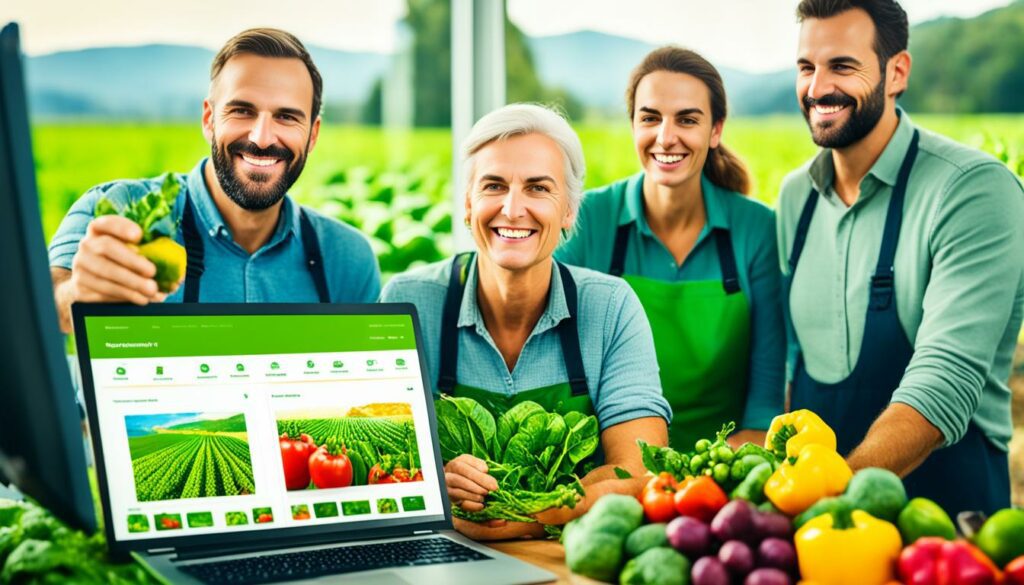
In 2020, most of Japan used the internet, mainly through smartphones. This shows the need for easy-to-use websites to sell farm products online. With many markets in Japan and people wanting healthy, simple, and affordable food online, these platforms can do very well.
| Type of Transaction | Example |
|---|---|
| Business to Consumer (B to C) | Japan Agricultural Coop |
| Consumer to Consumer (C to C) | Online farmers markets |
Success for these sites comes from many factors. These include valuable products, good media presence, smart marketing, and looking after customers well. Farmers can run their online shops themselves or get help from services. These services can do everything from taking orders to deliveries.
Online places to buy farm goods benefit farmers and buyers. They help small farmers fetch better prices and deliver their goods on time, cutting food waste. Innovations like smart farming and blockchain also make the whole process more clear and efficient. Sites like Alibaba’s Rural Taobao offer a wide choice of farming products and easy ways to buy.
In summary, these special online platforms are changing how we do farm business online. They open up new chances and make the farm-to-table journey smoother and more effective.
The way we farm is changing, thanks to digital agriculture. This includes online methods and new technologies. Farmers today use digital tools to work more effectively and carefully. It’s all about using smart tech to grow better and take care of the land.
At the heart of digital agriculture are precision farming methods. These use GPS, sensors, and drones to keep an eye on fields. The data they provide helps farmers make better choices.
Buying and selling online makes precision farming easier. It means farmers can find the latest tools to boost their crops. This not only helps the planet but also the farmer’s pocket.
Farming is getting smarter with IoT, which means using smart devices. From automatic watering to monitoring plant health, these gadgets give instant feedback. This information is then turned into smart strategies for farming. This makes the way we farm not just efficient but also more sustainable.
The use of these technologies also opens the door to larger markets. It helps farmers reach more people while running their farms smoother. This is how digital farming platforms are helping farmers succeed.
Despite the benefits, there are challenges with online farming. These challenges show why digital farming is so important. It helps farmers do better, serving more customers and making more money. New financial tools, like blockchain and AI, are also changing how farming is funded.
| Technology | Application | Benefits |
|---|---|---|
| GPS | Field mapping and precision planting | Optimised use of resources |
| Sensors | Crop and soil monitoring | Improved crop health and yield |
| Drones | Field surveying and aerial imagery | Informed decision-making |
| IoT Devices | Automated irrigation and climate control | Efficient resource management |
| Data Analytics | Analysis of farm data | Strategic planning and implementation |
In 2024, e-commerce trends will deeply influence farming’s future. The e-commerce adoption in agriculture has brought new ways for farmers to connect with customers online. This change leads to more sales and uses improved tech.
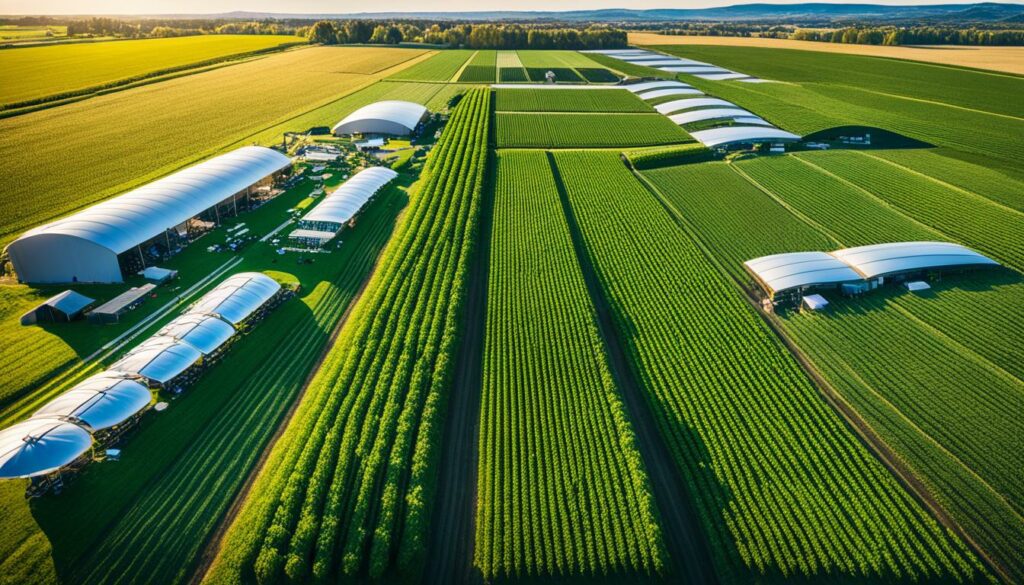
Shops are moving to smarter, customer-focused sales that mix old and new ways. Online marketplaces are vital for farmers and sellers, helping them reach more people and sell more. Big names like Amazon and Alibaba are essential in this shift.
To explain further, let’s look at how the market is segmented:
| Market Segment | Details |
|---|---|
| B2B | Business to Business transactions involving bulk orders |
| B2C | Business to Consumer transactions focusing on direct sales |
Many areas are part of this market, including ways for governments, businesses, and consumers to buy. Mobile e-commerce platforms and using social media to advertise are key in farming now. Plus, blockchain makes supply chains clearer, which builds trust with buyers.
Even with some problems, farming’s online future looks bright. Tech and higher need for farm goods will boost this move. This change highlights a major idea: farming’s future is closely tied to online sales and digital commerce.
More people care about the environment. So, e-commerce is using sustainable farming more. This helps reduce the harm farming does and meets what shoppers want. Digital tech and green farming create chances for farmers and buyers.
E-commerce can greatly help the environment in farming. New tech means farming is more productive, green, and profitable. For example, precision farming uses tech like GPS to work smarter and use less. This reduces waste and the harm farming does to nature.
By 2028, the market for smart farming will grow a lot. This shows tech is key for green farming online. Platforms like eFarm focus on being clear, efficient, and green in selling farm products.
Shoppers want eco-friendly farm products. So, farmers go green to reach more buyers. Online farming helps farmers sell green products easier. It also makes buying and selling farm goods simpler and greener.
Good online farms markets help farmers and buyers connect. They encourage green farming together. eFarm offers safe user accounts and makes selling online easier. This helps farmers choose to go green.
Using green farming in e-commerce means we help the earth and meet what buyers look for. Online farming’s growth is good for the environment and farmers. It makes sure farming is green in this tech-filled era.
New product testing has gained a lot from selling online. It lets farming businesses see if their products will be well-received. This happens with less risk and by getting feedback from customers right away.
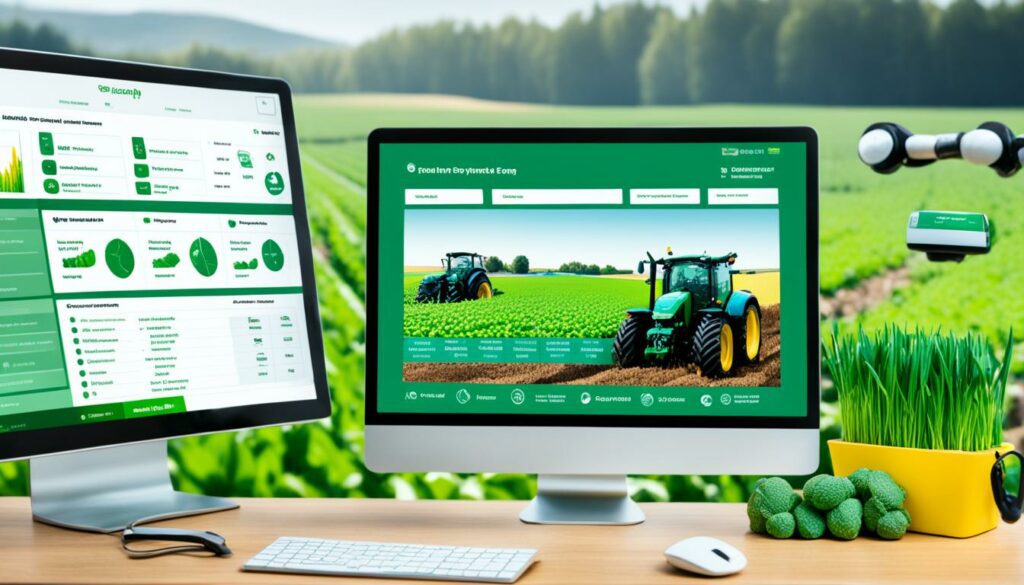
Trying out new products online is smart. It’s a way for businesses to see how their ideas might do without making lots of them first. So, they can get an idea of what customers think without spending a lot.
Online sales help businesses get feedback from customers quickly. This feedback is gold for knowing what people like. By using this feedback, companies can keep improving their products to meet what the market wants.
| Key Benefit | Impact | Example |
|---|---|---|
| Risk Minimisation | Reduces financial exposure in early stages | Trial runs of new seed types |
| Immediate Feedback | Enables quick adjustments | Real-time consumer reviews |
| Market Insights | Informs product tweaks and innovation | Data on purchasing trends |
The use of blockchain in agriculture greatly enhances supply chain transparency. It makes sure farm products’ history and quality are clear to all, from farmers to end users. In Australia, AgriDigital uses blockchain to make grain trades better. It allows farmers to get paid right away and makes everything clear for everyone involved.
Big efforts like IBM Food Trust are leading the way in using blockchain. Walmart and others are working with them to make food safer and reduce waste. In Vietnam, TE-FOOD is tracking livestock and fresh food to make things safer for 6,000 companies. These examples show how blockchain boosts trust in supply chains.
Blockchain also brings in smart contracts. These make deals happen on their own, cutting down on arguments and ensuring quick payments. Even though there are challenges, like getting everyone to use it, blockchain has a lot of benefits. It will make farming more efficient, products easier to track, and the food supply chain trustable.
For blockchain to work well in farming, it needs careful planning, training for everyone involved, and constant help. Companies that use blockchain right see many benefits. These include less money spent on each transaction, better stock control, fewer fraud losses, and keeping up with the rules.
Blockchain in farming offers a chance to make food systems more reliable, save money, and meet customers’ needs. It’s likely to change how farms sell online a lot. Offering food that’s verifiable and traceable is a big plus for buyers.
The growth of e-commerce in agriculture is greatly influenced by working together with other industries. These partnerships lead to new, customer-friendly products. They meet the changing demands of people.

Working with equipment makers is a key partnership area. It helps agriculture improve how it produces things. This means more goods can be made by farmers.
It also makes farming more cost-efficient. Plus, it helps the environment by promoting sustainable farming. This aligns with the trend of using more digital solutions.
Another way agriculture is teaming up is by sharing product lines with other industries. They mix different goods and services together. This makes it easy for people to buy what they need in one go.
For example, they can buy tools and fresh food from the same place online. This better serves customers. It also creates new ways for farms to make money.
This teamwork and sharing of products is essential for e-commerce growth in agriculture. It makes the market more linked and productive.
The rise of farm management software shows big changes in how farms use technology. By 2029, it’s expected to reach USD 5.8 billion from USD 3.4 billion in 2024. The use of high-tech methods in farming is key to this growth.
Good farm management software has features that can make farming operations run better. They include tools for real-time data analysis. This helps farmers see their operations clearly.
New agricultural tech solutions bring a lot of good changes to farms. They can boost productivity, save money and help make smart decisions. Here are a few key benefits:
Keeping data secure is very important in farming now. High-tech solutions are being used more. They show how crucial good farm software is for the industry today.
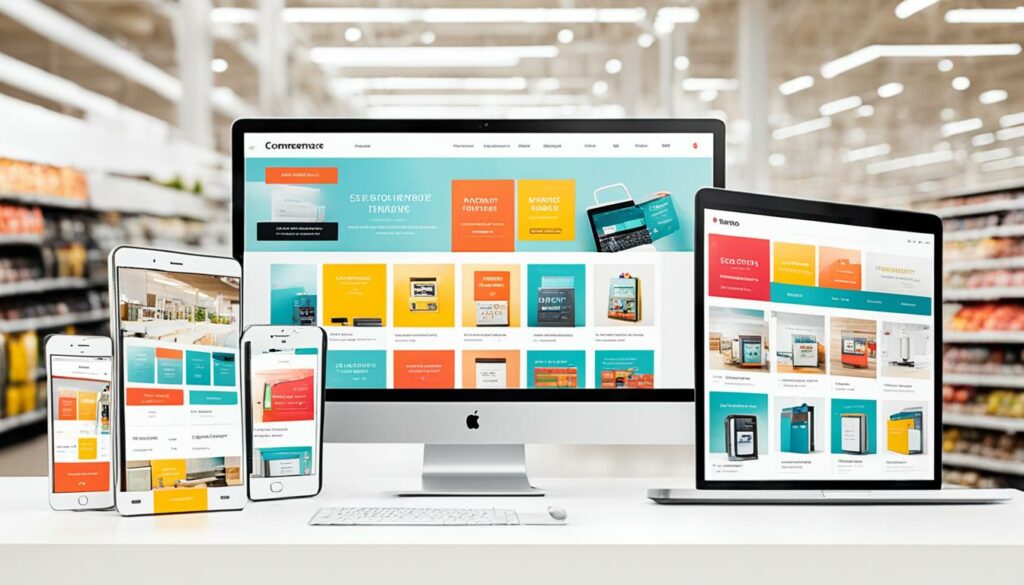
Farm e-commerce success relies heavily on customer experience in e-commerce. Businesses strive to make every customer interaction smooth and personal. This journey starts from the first contact to the final purchase.
Understanding what customers need at various points helps achieve consumer satisfaction in farm sales. Customers want more than just products. They desire an entire shopping experience that makes them feel important and understood. Making it easier to buy and offering good customer service is key.
“73% of global consumers are willing to change their consumption habits to reduce environmental impact.”
Sustainable products are becoming more popular. Companies can benefit by offering products that appeal to these eco-conscious buyers.
Brands that make a positive impact on society tend to grow much faster. This proves that meeting consumer values boosts business success.
Tailoring shopping experiences to each individual is very effective. For example, 35% of Amazon’s sales come from recommending products using advanced algorithms. In farm e-commerce, similar tactics can improve sales and customer happiness.
Standing out in agriculture e-commerce is tough but crucial. By making shopping easy, personal, and offering great service, farms and e-commerce can build strong customer loyalty. This loyalty supports present and future business growth.
Emerging agri-tech is changing farming, solving big problems for farmers. It’s not just making things work better; it’s turning old ways into new, smart ones.
Some modern agriculture trends are very important. The value of smart agriculture is going to jump from $15 billion in 2022 to $33 billion by 2027. Also, IoT devices for farming will hit $33.57 billion by 2032. And artificial intelligence in farming will turn from $1.7 billion in 2023 to $4.7 billion by 2028. Plus, autonomous tractors will be worth $3.29 billion by 2028, growing really fast at 26.1% each year.
| Technology | 2022 Value ($ Billion) | Projected 2032 Value ($ Billion) | CAGR (%) |
|---|---|---|---|
| Smart Agriculture | 15 | 33 | 9.5 |
| IoT in Agriculture | 13.61 | 33.57 | 9.5 |
| AI in Agriculture | 1.7 | 4.7 | 23.1 |
| Drones in Agriculture | 1.1 | 7.19 | 20.7 |
| Autonomous Tractors | N/A | 3.29 | 26.1 |
Farming is changing a lot because of new tech. With more people to feed and a 70% food production increase needed by 2050, old ways won’t cut it. New technologies are boosting how much food we can grow and how we grow it.
Agriculture also causes a lot of the world’s food-related emissions, around 40%. But, by using high-tech farming and letting machines do some work, emissions can be cut a lot. In places like Europe and North America, many farmers are already using these new methods. They have a high adoption rate of agtech.
It’s really key to follow the changes in agri-tech and see how they impact farming. The move towards using more technology in farming is the key to a successful, modern agriculture. This new farm era will be all about using digital tools, being connected, and being eco-friendly.
Looking forward to 2024, e-commerce trends in agriculture show big changes. The use of platforms like Farmdrop and Ninjacart is growing. These platforms cut out the middlemen, which means more money for farmers and easier access for consumers.
In China, Alibaba’s Rural Taobao shows how online markets are getting bigger. They create efficient markets that reach far and wide. And, technology like IoT devices help farms produce better, using data more than ever.
There’s more demand for sustainable farming, especially in the US. People want local and organic products. Platforms like LocalHarvest and Farmigo help make these goods available. Blockchain, used by companies such as Provenance, makes sure these products are real and safe, which boosts trust.
In 2024, expect to see better personalised shopping online. Voice commerce and AI chats will get bigger. They’ll make shopping online more tailored and engaging. Plus, the sector is pushing hard for eco-friendly practices, such as renewable energy and green packaging, proving its commitment to the planet.
To sum up, the farm e-commerce scene is headed for growth and change. With more digital and direct-to-consumer ways, agriculture is rethinking how it sells. This means exciting times ahead, with benefits for both farmers and shoppers.
In 2024, we’ll see big changes in how farmers sell their goods. They will sell more directly to customers. Social media will play a bigger role in helping them sell. Buying from phones will be the norm. They’ll use lots of data to personalise the shopping experience. Also, the way they deliver products will get better. Plus, they’ll use special online shops just for farm products.
The direct-to-consumer approach skips many middlemen. This allows farmers and buyers to deal with each other directly. It makes things easier for small farms. Buyers get fresh local produce quickly.
Social media is key for farm e-commerce. It influences buyer habits and boosts sales. Nearly half the people worldwide use social media. This helps farmers connect closely with their buyers. It also makes buyers more loyal by sharing interesting posts and ads.
Yes, shopping on mobiles is vital. Roughly half the web users shop on mobiles. Farms need websites that work well on mobile to reach these buyers. This is especially true for buyers who are also farmers.
Personalised shopping helps make customers happy. by using data, farmers can meet each buyer’s needs better. This makes buyers more engaged and satisfied. So, farmers can sell what buyers want more accurately.
To improve deliveries, farms should work with good logistic firms. They should keep their stock records updated. It’s also vital to have a smooth way of managing their supply chain. This ensures their products get to customers quickly and on time.
Yes, there are special online shops just for farm goods. They meet the specific needs of agricultural sales. These platforms help farmers sell to more people. They also offer buyers a wider choice of local farm products.
Digital farming merges smart farming with selling online. This combo boosts farm output. It also cuts out middlemen, letting farmers sell directly to shoppers more easily.
In 2024, more farmers will sell online. They’ll use smarter ways to sell, really focusing on what the customer needs. They’ll mix traditional sales with modern online ways. These changes will influence how farms sell and grow in the future.
Consumers care more about the environment. So, e-commerce is pushing for more eco-friendly farming. This encourages farmers to use methods that are good for the planet and their business.
Online sales let farmers test new items with less risk. They can quickly see what buyers like and don’t. This helps them make products that meet their buyers’ wants better.
Blockchain makes it easier to see where food has come from. It helps buyers trust online farm sales. By checking the blockchain, they know a product is what the farmer says it is. This builds faith in what they buy.
Farmers are working with companies that make farm equipment and others. This teamwork offers more to shoppers. It helps farmers sell more and gives buyers better deals too.
Farm software should make work easier and better. It should help with planning and deciding what to do next. Good software means farms run smoother and make more money.
Customer care is key online. Farmers need to meet buyers’ needs at every step. This builds loyalty and brings more repeat business. In a crowded online market, this is what helps farms stand out.
New tech like careful farming, machines that work alone, and drones are changing farming. They make farming more efficient and connected. Looking ahead, farms will rely more on these smart techs.